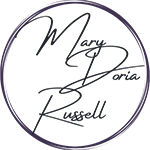After my last blog, a reader asked, “With the ton of research you must do, how do you tackle it? Do you live in the library archives for months and take notes? Are you a 3 x 5 card kinda gal recording data into several categories, or do you devour books from the past and just remember them? Do you download journal or newspaper articles from history databases and then make files on your PC for different chapters? Or do you just go into to Google books or some database and get what you need daily? I guess what i am asking, with your accurate historic fiction, how do you keep it all organized and ready for use?”
The quick answer is all of the above, except the library part. Twenty years ago, when I was writing The Sparrow, I had to drive to the Cleveland Public Library and sit in a carrel with a stack of sources about the Japanese space shuttle program. (In 1992, Japan had an active space program but when their economy tanked later that decade, they shelved it.) All the aeronautics journals had to be requested ahead of time from Interlibrary Loan and I had to take notes on paper because the material did not circulate and Xerox copies cost a nickel a page. Today, all of that information would be available free, in nanoseconds, online.
When I start a historical novel, I accumulate a library of books on the era and collect biographies of anyone who might be in my novel. I also get reference works about whatever their interests and professions were (19th century piano music; the psychology of gambling; sociology of the sex industry, etc.) I end up with about 24 linear feet of working library before the writing begins. Some of that is stuff I read early on, but most of it will be referenced months or years later. For example, two years ago I bought a big fat used book by J.J. Wagoner called Arizona Territory 1863-1912 and just started using it this week for a chapter I’m writing now.
To get my head around the sequence of historical events, I buy big desktop-sized calendars with blank dates, Google the year 1881, say, and fill in the months and days, so I’d know what day of the week something happened, not just its date. As I read through general histories and biographies, I made notes about when each character arrived in Tombstone, and when the Benson stage robbery took place, and when Old Man Clanton was killed, etc. I also had a shoebox of 4×6 cards, divided by character and by month, so I could see if Johnny Behan was there during the fire on June 22, 1881, for example.
It was that exercise that showed me how important the assassination of President James Garfield must have been. He was shot by the “deranged office seeker Charles Guiteau” in June, 1881, and died a few weeks before the gunfight at the O.K. Corral. The president’s doctors issued daily bulletins about his condition, and his long dying was a national obsession and that told me something important about the political context of the gunfight.
I have a file folder for each character, as well, and drop in notes about dialog or insights I develop as I go. Any scanned and printed articles go in the folders, as do torn-out articles from magazines I subscribe to. There are also folders for events (“Benson stagecoach robbery,” “gunfight,” “Morgan’s death,” “real estate assessments,” etc.)
A lot of detailed research is most easily done online.This morning, I wanted to write a scene in which representatives of the governments of Mexico and the United State discuss a potential war over American outlaw incursions across the border into Mexico.
Who did the US State Department have in Mexico City in 1881? An ambassador? An envoy? Who would he be talking to? The president of Mexico, or would that conversation be at a cabinet level? Can I dig up the real names of the diplomats? What titles would they use when addressing each other directly?
All of that research was done online in about twenty minutes. I think I started by Googling “Ambassador to Mexico 1881.” We didn’t have an ambassador to Mexico that year but by following links, I got to a Wikipedia entry about Philip Morgan, named by President Hayes “envoy extraordinary and minister plenipotentiary” to Mexico, a position that he held from January 26, 1880, to June 6, 1885.
Next I tried Googling “Mexican department of state 1881” and again the initial query wasn’t quite right, but I tracked links back and found out that in 1881, there was a Mexican Department of Foreign Affairs. “Philip Morgan Mexican Department of Foreign Affairs 1881” brought me to a Google Books copy of page 384 in a U.S. State Department Foreign Affairs journal from the era, which had Mr. Morgan’s correspondence with the Mexican official who was his counterpart: Igno. Mariscal. I learned that they addressed one another as “sir” in correspondence, but that they would both be addressed as Your Excellency in person.
Before I could write the scene. I had to out what “Ingo.” was the abbreviation for; Googling “INGO.” told me it was short for Ignacio. And finally, I checked on how a “minister plenipotentiary” differed from an ambassador.
And then I got started on the chapter. Easy-peasy…
